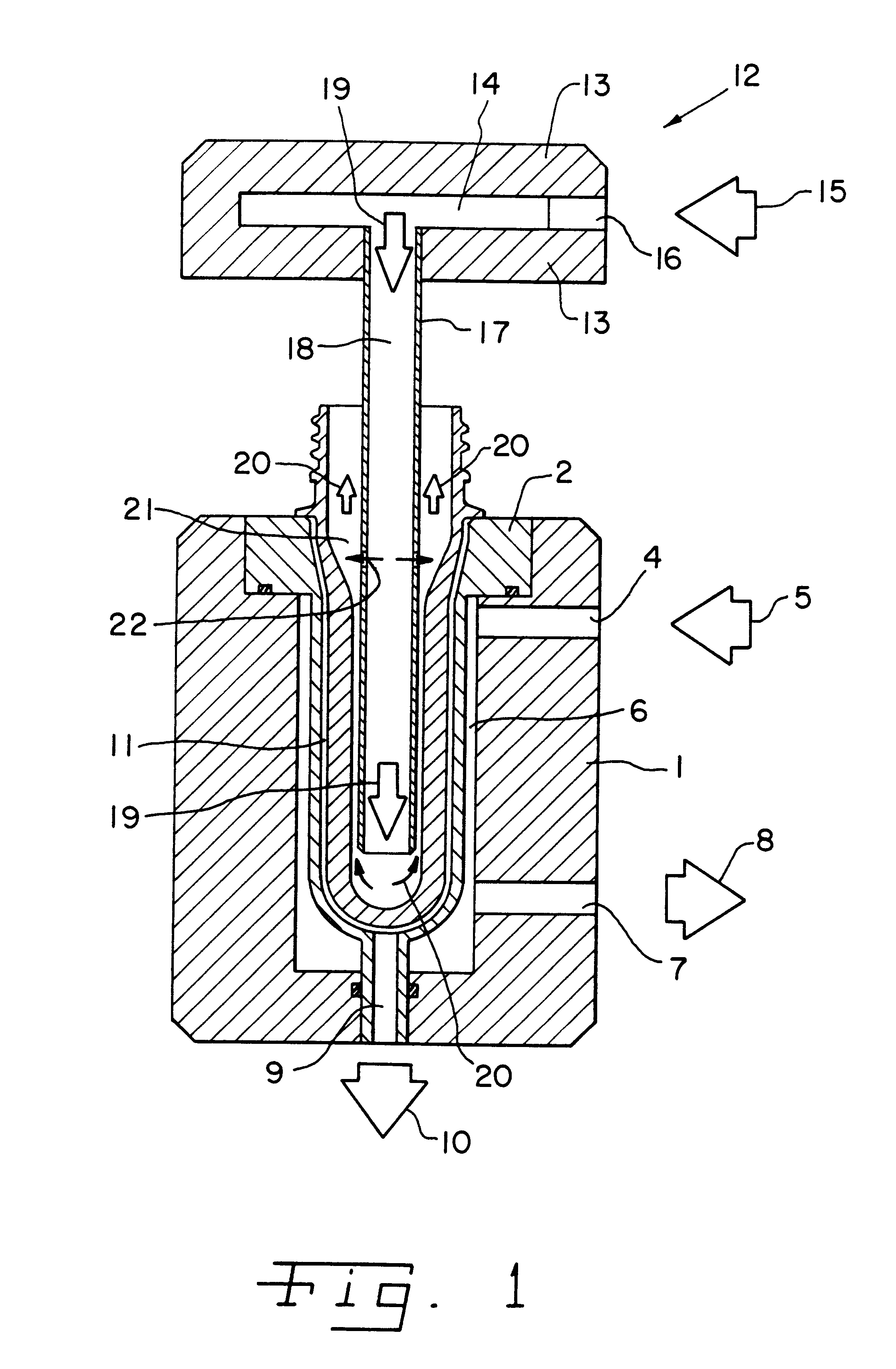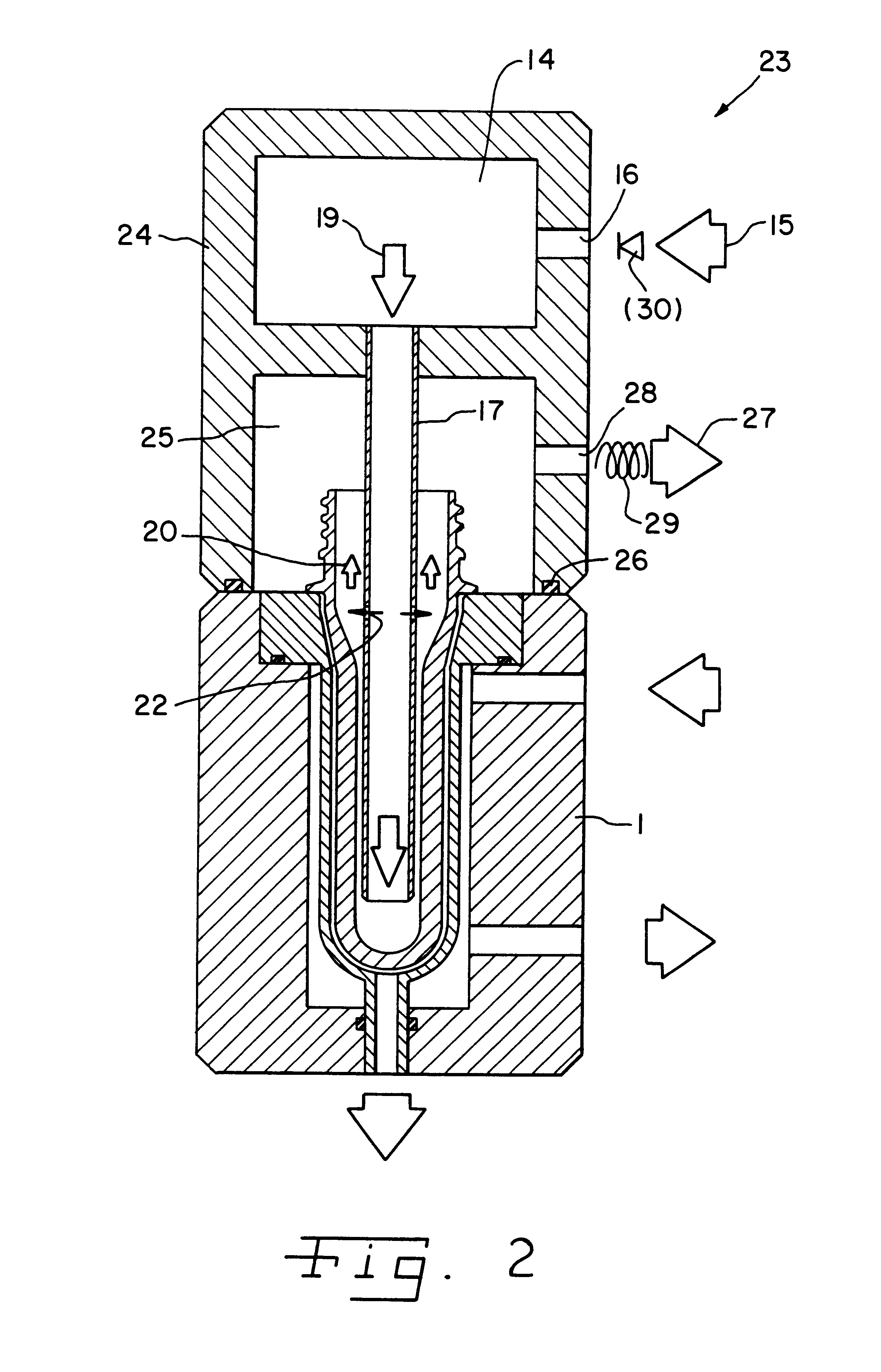Method and device for the after-cooling of a preform in the injection molding process
a technology of injection molding and aftercooling, which is applied in the field of aftercooling of preforms in injection molding processes, can solve the problems of limited cooling performance in the after-cooling process, only insufficient cooling of preforms, and deterioration of plastic materials, so as to avoid unwelcome air vibrations
- Summary
- Abstract
- Description
- Claims
- Application Information
AI Technical Summary
Benefits of technology
Problems solved by technology
Method used
Image
Examples
Embodiment Construction
In FIG. 1 there is generally represented an after-cooling plate 1, which, in the interest of simplicity, is represented only in simple form of execution. It was already pointed out in the general specification part that in the drawing plane of FIG. 1, this after-cooling plate 1 is repeated in multiple execution; i.e., several after-cooling plates are represented and present in succession in the drawing plane of FIG. 1 and in each after-cooling plate 1 there is arranged a corresponding inset 2 for a preform 3 to be cooled.
Obviously the after-cooling plates 1 can be arranged parallel next to one another in the drawing plane of FIG. 1 or of FIG. 2, so that they can be present adjacently to one another and also in succession with one another in multiple execution.
The same holds, furthermore, for the cooling blast station 12 represented according to FIG. 1, or the cooling blast station 23 according to FIG. 2, which in correspondence to the design of the after-cooling plate is present in ...
PUM
| Property | Measurement | Unit |
|---|---|---|
| Angle | aaaaa | aaaaa |
| Temperature | aaaaa | aaaaa |
| Pressure | aaaaa | aaaaa |
Abstract
Description
Claims
Application Information
 Login to View More
Login to View More - R&D
- Intellectual Property
- Life Sciences
- Materials
- Tech Scout
- Unparalleled Data Quality
- Higher Quality Content
- 60% Fewer Hallucinations
Browse by: Latest US Patents, China's latest patents, Technical Efficacy Thesaurus, Application Domain, Technology Topic, Popular Technical Reports.
© 2025 PatSnap. All rights reserved.Legal|Privacy policy|Modern Slavery Act Transparency Statement|Sitemap|About US| Contact US: help@patsnap.com



